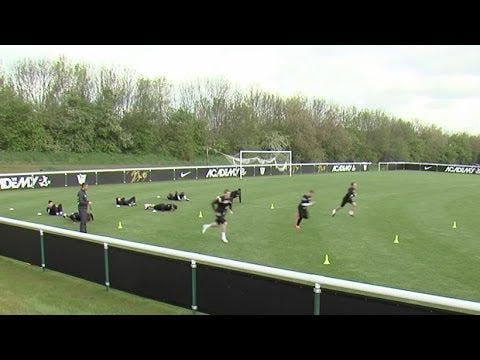Why Fartlek Running is a Game-Changer for Soccer Players
Fitness for soccer players is essential.
Why Fartlek Running is a Game-Changer for Soccer Players
Fartlek is one of the best training methods to achieve the highest levels of cardiovascular fitness. This Swedish training technique, which means "speed play," is a perfect fit for soccer players due to the unpredictable pace and need for bursts of speed players face in every soccer game. Fartlek training is also a key training strategy for the world’s greatest distance runners. In some cases, they will embark on a long run and pick random landmarks to run faster to, then slow down (not stop) afterwards. The on-again/off-again nature of Fartlek mirrors game-like conditions nicely. Plus: it’s not just more sprints. Here is an example of the world’s best marathoner working his way through a Fartlek session (from Sweat Elite): :
What is Fartlek Running?
Fartlek training involves alternating between different speeds during a run. Unlike traditional interval training, which has set rest periods, Fartlek running is more fluid—players transition between sprinting, jogging, and steady-paced running based on feel or structured cues. During a soccer practice, Fartlek training can be combined with strength circuits to diversify the workload and get more bang for our buck during a conditioning session.
Why is Fartlek Running Ideal for Soccer?
1. Simulates Game Conditions
Soccer is far from a steady-state endurance sport. Players constantly shift between walking, jogging, stopping, jumping, running hard, running harder and all-out sprinting. Fartlek running mimics this variability, preparing players for real-game scenarios.
2. Improves Speed and Acceleration
Short, high-intensity bursts within a Fartlek session help players develop explosive speed, a crucial component for breaking past defenders and winning duels.
3. Boosts Stamina and Endurance
By alternating intensities, players build the endurance needed to sustain high performance for a full 90 minutes.
4. Enhances Recovery Time
The ability to recover quickly between sprints is essential. Fartlek training teaches players to manage fatigue and maintain performance throughout a match.
5. Develops Mental Toughness
Since Fartlek running lacks strict structure, it challenges players to push themselves based on effort rather than time or distance, improving mental resilience.
How to Implement Fartlek Training in Soccer Practice
Here’s a simple yet effective Fartlek routine tailored for soccer players:
1. Warm-Up (10 minutes)
- Light jogging, dynamic stretching, and mobility drills.
2. Fartlek Session (20-30 minutes)
- 0-5 min: Steady jogging at relative effort. The easiest way to gauge ease is whether or not the players can talk at this pace. If they aren’t talking while running with ease it is too fast.
- 5-7 min: Sprint for 10 seconds, jog for 30 seconds, repeat
- 7-10 min: Moderate pace with occasional acceleration bursts
- 10-12 min: Sprint for 15 seconds, jog for 45 seconds, repeat
- 12-15 min: Return to a steady pace
- Repeat the cycle as needed
3. Cool Down (10 minutes)
- Light jogging followed by slow dynamic stretching into static stretching.
Other Examples: Incorporating HIIT
This example from FourFourTwo is an excellent session to work on pre-season/offseason fitness. It is also effective in-season but the efforts mid-week require more delicate management to ensure match-day fitness.
Here’s another example from Aren Dobbs, while this is a classic that anyone who played the game at any level in their youth’s experienced it’s still a staple and the easiest way to incorporate the recovery period between sets of work. The players who aren’t working are incentivized to take it easy to get a longer break which is critical to get peak speed during the interval:
Challenge Your Players
Fartlek sessions can happen on the field, the track, the trail, or on the sidewalks of the road. Essentially, they can happen anywhere. Emphasize that the hard intervals should be hard, and the easy/jogs/recoveries should be easy.
We need our athletes to work harder in practice than in the game. Game day should be fun, and the only way to get players ready to compete at the highest level is by pushing the needle on physical efforts in training.
Recovery is equally important for challenging athletes physically. Balance the session or week of training accordingly.




